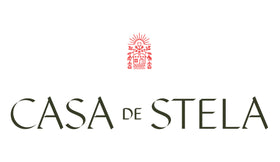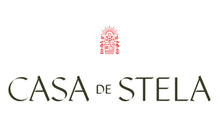Always Ethical, Always Loved
Hello from the stela 9 headquarters! On today’s post we are going to show you and give you more of an insight on how the pieces from the collections come to life. So, you can be more aware of the process that goes into making your item of clothes, from the threads until it gets to your hands.
And so, as many of you who’ve been following us for a while know that sustainability is one of the main foundations of the company, so every piece is ethically and sustainably made.
All of our cotton threads are plant dyed in the forests of tecpan. Natural dyes are a great alternative against the massive contamination of synthetic dyes, avoiding contaminating different water sources and fertile lands.
---------
Saludos desde las oficinas de Stela 9. En el post de hoy les mostraremos y daremos más información sobre como las prendas de ropa son hechas. Para que puedan conocer más a fondo el proceso y trabajo por el que pasa su ropa, desde las madejas de hilo hasta que llega a sus manos.
Así que como muchos de ustedes quienes nos siguen desde hace tiempo saben que la sostenibilidad es uno de los principales pilares de Stela 9, por lo que cada pieza se fabrica de manera ética y sostenible.
Todas nuestras madejas de hilo son de algodón, teñidas a base de plantas en las selvas de Tecpán. Los tintes naturales son una gran alternativa contra la contaminación masiva de tintes sintéticos, evitando la contaminación de las distintas fuentes de agua y tierras fértiles.

All of the cotton threads were naturally dyed with these plants:
--------
Todos los hilos de algodón se tiñeron naturalmente con estas plantas:
 Achiote: which produces this orange and ocher orange color. The orange color is obtained from the pulp of the seeds from which a paste is made that is commonly used to give color and as a spice on stews, sauces, tamales, etc.
Achiote: which produces this orange and ocher orange color. The orange color is obtained from the pulp of the seeds from which a paste is made that is commonly used to give color and as a spice on stews, sauces, tamales, etc.
---------
Achiote: el achiote produce un color naranja-naranja ocre. El color anaranjado se obtiene de la pulpa de las semillas con la que se forma una pasta, la cual es usada comúnmente para darle color y sabor a los recados, salsas, tamales, etc.
 Índigo: The whole fermented plant is used to obtain the indigo powder, which comes from el Salvador.
Índigo: The whole fermented plant is used to obtain the indigo powder, which comes from el Salvador.
---------
Índigo: toda la planta fermentada es la que se usa para obtener el añil, este polvo viene del salvador.
Palo de pito (tz’ité) : Tree whose flowers are red and elongated like a whistle, The seeds (beans) are bright red, its leaves and bark are the ones used for dyeing. The red flowers are also used in some areas as food.
---------
Palo de pito (tz’ité): es un árbol con flores rojas y alargadas como forma de pito. Las semillas (frijolitos) son de color rojo fuerte, sus hojas y corteza son las que se usan para teñir. Las flores rojas también se usan en algunas áreas para comer.

 Palo de brazil: Tree whose bark is light brown and the center of the stem is a reddish brown, very dark orange. The part that its used for dyeing is the heart of the wood.
Palo de brazil: Tree whose bark is light brown and the center of the stem is a reddish brown, very dark orange. The part that its used for dyeing is the heart of the wood.
---------
Palo de Brazil: la corteza de este árbol es de color café claro y el centro del tallo es de color marrón rojizo, anaranjado muy oscuro. La parte que se usa para teñir es el corazón de la madera.
The threads are dyed through a ¨bath¨ sort of process where they are submerged in a pot with hot water and the natural dye.
---------
Las madejas de hilo se tiñen mediante un proceso de ¨baño¨ en el que se sumergen en una olla con agua caliente y el tinte natural.




After they are submerged for a period of time its time to let them air dy.
---------
Después de sumergirlos durante un periodo de tiempo se dejan colgados para que se sequen con el aire.

After the thread is dry and ready to use, we sent them to the weavers in the highlands, where they prepare it to set it up on the loom, which is a very time-consuming process, it varies depending on the type of thread, the fiber and the design.
The foot loom it’s used for the manufacture of fabrics with a more complex structure, its mechanization allows to work on larger fabrics in a faster way, without losing its artisan value.
These pieces were made with gauze huipil coban style fabric, because the lightweight cottons are fresh to wear during the summer.
---------
Después de que el hilo está seco y listo para usar, se lo enviamos a los tejedores en las tierras altas, donde los preparan para ser colocado en el telar, el cual es un proceso bastante largo que puede llevar hasta 3 días, varía según el tipo de hilo, la fibra y el diseño.
El telar de pie se utiliza para la fabricación de telas con una estructura más compleja, su mecanización permite trabajar en telas más grandes de manera más rápida, sin perder su valor artesanal.
Estas piezas fueron hechas con tela gauze huipil estilo Cobán, porque es está hecha de algodón ligero, el cual hace que la ropa sea fresca para usar en clima cálido.


When the fabric its done, we take it to Irma who is our pattern maker and seamstress along with her sisters, are the ones who make the stela 9 designs come to life. All of our pieces are hand sewn in her studio outside of Antigua. She gets paid fairly as every single person involved on the process, so they can provide for their families.
And this is the process for which the clothes go through until they are available for you to buy through the website or in our boutique in La Antigua Guatemala.
---------
Cuando la tela ya está terminada, la tela es llevada a Irma quien es nuestra diseñadora de patrones y costurera junto con sus hermanas hacen que los diseños de Stela 9 cobren vida. Todas nuestras piezas son cosidas a mano en su estudio a las afueras de La Antigua. Ella recibe un pago justo por el trabajo que hace, así como todas las personas involucradas en el proceso de esta manera pueden proveer lo necesario para cubrir sus necesidades y las de sus familias.
Y este es el proceso por el que pasan las prendas de ropa hasta que están disponibles para ser compradas a través del sitio web o en nuestra boutique localizada en La antigua Guatemala.

Every piece from the threads to the final product tells the story of our partnership with the artisans, keeping alive these traditional techniques that bring to life our dream wardrobe, keeping the integrity of our workers and without destroying the environment.
---------
Cada pieza, desde los hilos hasta el producto final, cuenta la historia de nuestra asociación (alianza) con los artesanos, manteniendo vivas estas técnicas tradicionales que dan vida a nuestro closet soñado, manteniendo la integridad de nuestros trabajadores y sin destruir el medio ambiente.

WRITTEN BY - NATALY MARTINEZ


Leave a comment